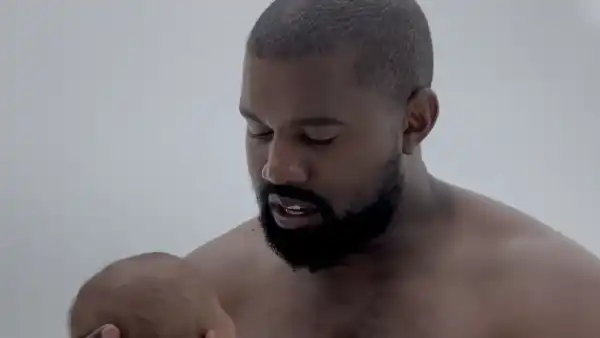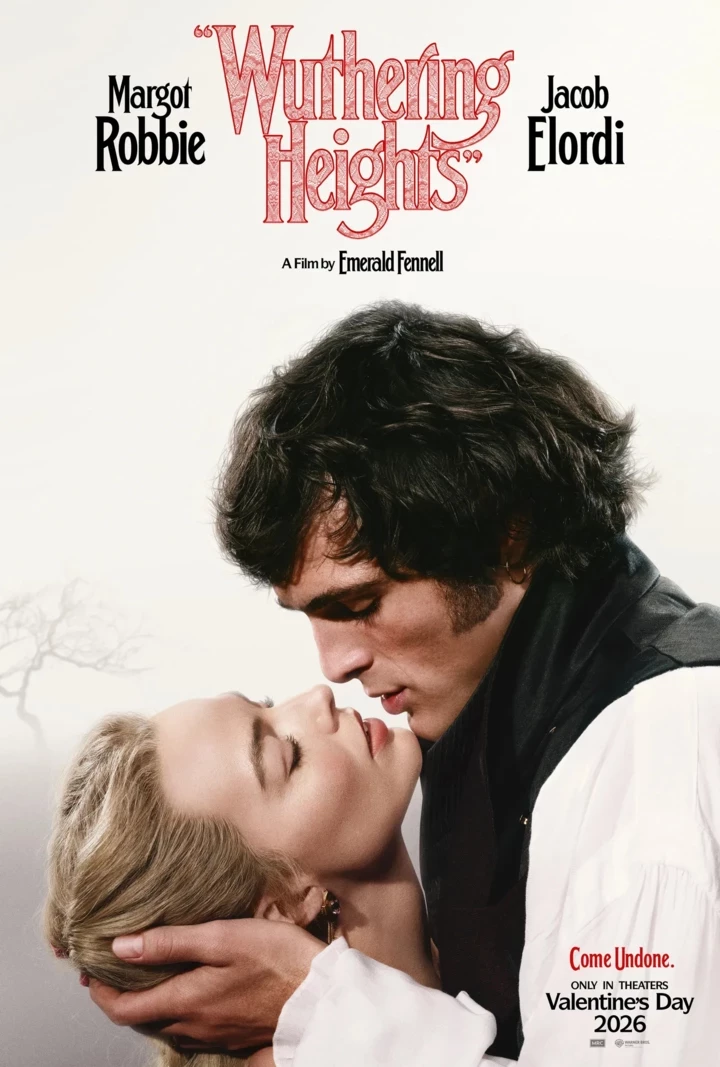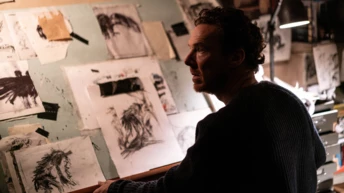
Save this storySave this storySave this storySave this story
In March of the present year, Ye, the recording artist previously identified as Kanye West, publicized an “open casting announcement” to his thirty-three million followers on X. Those considering participation in the casting session had ample justification for caution. Prior Kanye West music films encompassed one in which he and the rapper Lil Pump don absurd, box-shaped outfits and mischievous smiles as they sexually harass a colossal Adele Givens; another showcasing Teyana Taylor executing a steamy, almost pornographic dance number before morphing into a feline mythical being; and still another portraying West in slumber next to close to a dozen celebrated figures, undressed and snoring, notably Taylor Swift, Anna Wintour, Bill Cosby, and George W. Bush—still the most outlandish intimate gathering nearly a decade later.
However, anyone still attentive to West in 2025 possessed even more pronounced reasons for apprehension, as the remaining portion of his X communication clarified. The casting announcement featured five rules. West, a contentious wordsmith on social media akin to his musical persona, articulated them explicitly, utilizing line separations and heightened capitalization:
All males
NO FAT PEOPLE
The skin complexion of Sean Combs and darker
With shaved heads OR must be willing to shave head if approved
MUST BE COMFORTABLE WEARING SWASTIKAS.
He hinted that the casting event would be for “Carnival,” a track whose efforts at challenging norms were so trite (“She ride the dick like a carnival”; “Anybody pissed off, gotta make ’em drink the urine”) that, upon release, it garnered minimal notice. Actually, he was evidently assembling a film for an alternate song, one that impacted a century-old delicate subject with such force that it did capture attention: a recent track titled “Heil Hitler.” Within the film, thirty-five individuals are positioned in four lines, illuminated by harsh UV light, repeatedly singing the three-word catchy chorus. (The initial word, amplifying both shock appeal and mental conflict, is the N-word.) The primary guideline of the casting appears operative, yet the second, fourth, and fifth appear to have been relaxed. Some of the men are without shirts. Others are adorned not with swastikas but with vaguely Norse-inspired animal pelts. Their neck muscles tense with fury; the whites of their eyes gleam in the black illumination. Even at the conclusion, as the camera concentrates on a man sporting a wolf mask as archived audio of a raging Adolf Hitler echoes in the backdrop, one remains uncertain whether the entirety was meant to be terrifying or amusing.
This constituted an especially flagrant instance, yet being manipulated in such a manner has been a common occurrence for any current or former enthusiast of Kanye West—a group that includes, to some measure, any individual who treats popular music with seriousness, although certain among us were particularly captivated. At his pinnacle as a producer and beat architect, none could emulate West’s extraordinary aptitude and persistent innovation. The singular factor that could contend with his talent was his equally robust urge, or perhaps necessity, to impair, complicate, or discard it. He dedicated two years to refining “All of the Lights,” arguably the most audacious and elaborately constructed popular song since “Thriller”—only to delegate the featured rap portion to Fergie. “The Life of Pablo,” West’s 2016 album concerning his perpetual battle to liberate himself from wrongdoing, commences with a majestic six minutes of minimalist-maximalist gospel-rap—first the beautiful “Ultralight Beam” and then the initial portion of “Father Stretch My Hands Pt. 1,” which sounds equally promising, until West interjects to deface his own creation with some of the most inane phrases ever recorded (“If I fuck this model / and she just bleached her asshole / and I get bleach on my T-shirt / I’mma feel like an asshole”). In 2018, he disseminated a charmingly heartfelt composition entitled “Lift Yourself.” His portion within it unfolds thus: “Poopy dee scoop / Scoop dee dee whoop / Whoop dee scoop dee poop.”
Over roughly one and a half decades—commencing in the initial George W. Bush years and concluding, coincidentally or otherwise, with the ascent of Donald Trump—West issued, both independently and as a producer for Jay-Z, Pusha T, and numerous others, one of the most consistently demanding and gratifying collections of creations in the annals of popular music. This represents an almost unmatched streak, one that will secure him a position in the established order irrespective of the quantity of disclaimers he insists on affixing to his heritage. (The Beatles, as an illustration, were exclusively in peak form for approximately six years—eight, at most.) Irrespective of his future actions, West will likely be commemorated as the premier hip-hop producer to have existed—an honor that invariably struck him as an offensive belittlement of his various other capabilities. He aspired not to be merely a musical producer; he sought to be a President, a clergyman, an acclaimed fashion creator, a master builder, a business magnate and forward-thinking visionary akin to Steve Jobs or Walt Disney. Upon the failure of these endeavors to materialize as desired, he underwent a villainous transformation. As he articulates on “Heil Hitler”: “So I became a Nazi—yeah, bitch, I’m the villain.” For those among us who cared deeply for West’s musical contributions, it is challenging to overstate the magnitude of this loss. (For individuals raised in the sixties, envision awakening to the revelation that Bob Dylan was actually a serial murderer, or Nina Simone a COINTELPRO operative, and you will possess a preliminary understanding.) To a casual reader of sensationalist headlines, West’s evolution into an antagonist may have seemed like merely another celebrity experiencing mental decline, or another instigator attempting to promote his latest undertaking. However, for us these were not mere provocations; they represented betrayals.
One straightforward approach to conceptualizing Kanye West involves perceiving him as a prodigy confined within the persona of a child perpetually teetering on the brink of a fit of rage. He retrieves his crayons, scribbles on a piece of paper, then proclaims the outcome a masterpiece—and frequently, remarkably, it is—and yet he may shred the paper moments later should his disposition shift, or should he receive anything short of immediate and absolute acclamation. Within the recent documentary “In Whose Name?,” a personal account of West’s protracted descent from acclaim, spanning 2018 to 2024, we observe this pattern recurring repeatedly, occasionally almost literally. While en route to the White House for a televised Oval Office assembly with President Trump, West, in a manner closely resembling his disruption of Taylor Swift’s acceptance speech at the 2009 MTV Video Music Awards, shouts over his go-between, Jared Kushner, “I need to go the exact way that a foreign dignitary would go!” In Uganda, during a safari excursion alongside his then spouse, Kim Kardashian, an entourage, and an exceptionally attentive security contingent, West, donned in a bulletproof vest overnight and practically trembling with suspicion (“I don’t feel comfortable here”), compels all to pack and return to the U.S. (One aspect the documentary verifies, if it were not already apparent, is that Kardashian possessed superhuman reserves of patience to remain married to West for the duration she did.) He references “my mental health,” and to prescription drugs that have been advised but that he has chosen to forgo. (The cover of his 2018 album “Ye” states “I hate being Bi-Polar its awesome.”)
In Basel, Switzerland, he strolls alongside the architect Jacques Herzog, who lavishes him with platitudes regarding timeless environments and organic contours. Subsequently, they convene for a conference with several of Herzog’s colleagues, and West’s demeanor abruptly transitions to confrontational. He offers a few scarcely coherent remarks, then directs his attention to one of Herzog’s female associates, soliciting her reaction. “Not what are you thinking—what are you feeling?” he inquires. “And when’s the last time you actually had a feeling?”
“I’m excited,” she replies, sounding apprehensive, “because I want to understand who you are.” The musical accompaniment is a mournful drone, portraying West’s casual browbeating as the approach of a stalker within a horror presentation. At one juncture during this scene, West is drafting something (the configuration of a roof?) and, upon the slightest indication that his draft is not a masterpiece, he destroys it. “I’m not really asking your opinions,” he conveys to the architects whom he has transported to Switzerland to encounter. “I know I’m right.” He persists thusly for a duration, adding, “I am Picasso.” Picasso was similarly a megalomaniac, but at least he was sufficiently perceptive to primarily concentrate on visual creation. In the documentary, West invests months traversing the globe, elaborating upon his intentions to conceive of a sanctuary, a school, a “sustainable city that runs off of air, fire, earth, and water”—virtually everything excluding his intention to generate another exceptional album.
Currently, the exclusive means of experiencing “In Whose Name?” entails attending a cinema. At an afternoon exhibition during the inaugural weekend, the Regal Union Square was approximately half occupied. The majority of the audience appeared to consist of Kanye completists, perhaps, but not Kanye adherents, if any such remain. When they expressed laughter, it seemed directed at West, not alongside him.
We observe him preceding his appearance onstage at Soldier Field, in Chicago, adorned with light-hued contact lenses and a dark leather overcoat, resembling a sullen adolescent who has been entrusted with an unlimited expense account and discharged within Hot Topic. (The impression is augmented by his proximity to Marilyn Manson.) Backstage, post-performance, West greets Elon Musk and escorts him into a vacant, entirely white chamber, which he defines as “the idea of a bedroom.”
“Interesting,” Musk states.
They recline adjacent to one another, gazing upwards at the overhead, then ascend and engage in awkward grown-up trivial conversation. “So are you and Kim, like, off and on, or something?” Musk queries. He chuckles, occupying the temporal void, then perseveres: “Claire and I—Grimes—we’re sort of . . . In the same text stream, she’s, like, ‘I love you,’ and then like, you know, a day later, like, ‘I hate you.’ ”
“I don’t have answers,” West utters, his bleached eyes directed into the distance. “[I have] answers to everything except for that.” The audience responded with laughter throughout this exchange, as if privy to deleted segments from “This Is Spinal Tap.”
Even amidst West’s domestic existence at its most serene, it persists in being laughable. The domicile he shares with Kardashian, in Calabasas, constitutes a mausoleum-esque edifice featuring marble facades and virtually no furnishings. It registers as a terrifying locale in which to reside, yet it furnishes the ideal acoustic properties for Kenny G to visit and perform “Over the Rainbow” on soprano saxophone, enveloped by long-stemmed roses, as West and Kardashian observe—one of the scant domestic activities we are afforded to witness, apart from vociferous disputes. En route to commemorating Halloween alongside his offspring, West states, “I’ve suffered so much trauma. The fact that I’m still here . . . every day is a blessing.” It proves challenging to focus upon his utterances, however, due to his embodiment within a full-figure costume, his countenance concealed by a canine mask. Subsequently, when he participates in a remote interview on MSNBC, he is once again enveloped, this instance within a foil-esque burka. A few moments into the interview, sensing disrespect from the host’s innocuous inquiries, he endeavors to rise in a fit of pique and depart, but the theatrics of his exit are undercut by the farcical sound of crumpling foil.
Throughout the documentary, he echoes the timeless refrain of the irritable youth: refrain from dictating what I am forbidden to articulate. He dons a scarlet “Make America Great Again” hat, and the greater the offense it engenders, the more it appears to galvanize him. During a conference at the offices of “Saturday Night Live,” where he is poised to make his seventh (and, as of this composition, final) appearance as a musical performer, he conveys to the comedian Leslie Jones that his advocacy for Trump is not strictly concerning Trump: “It’s about ‘1984.’ Orwell. It’s about mind control. It’s about Big Brother. It’s about: if I say the word Hitler, am I cancelled?” Not to betray the remainder of the motion picture, but the response transpires to be: Indeed, substantially. We observe as West converges with a procession of fellow notables: Drake, Pharrell, Chris Rock, Candace Owens (accompanied by the deceased Charlie Kirk). The majority among them communicate what he desires to perceive. The minority possessing the fortitude to oppose him during his errant moments—the comedian Michael Che, the producer Swizz Beatz, and Kardashian—are subjected to verbal beratement or disregarded. By the culmination of the documentary, West has dissipated a few billion dollars, his marital bond, and any lingering vestiges of his stature. Declaring himself “a bit of a masochist,” he asserts, “I love this part of the movie.” He is unique among us in that sentiment.
Analogous to the majority of petulant offspring, West appears to be enduring a deficiency of the singular element he genuinely requires: an embrace from his maternal figure. Tragically, for the West lineage and for the collective, Kanye’s mother, Donda, met an unforeseen demise in 2007. “Jeen-Yuhs,” a tripartite documentary concerning Kanye that manifested, via Netflix, in 2022, incorporates a trove of visual documentation of Kanye and Donda collectively, and she materializes as uncommonly animated and compassionate, the exclusively stabilizing presence in his existence. In retrospect, her forfeiture appears as the genesis of the conclusion. His ambivalent association with his conviction—a perpetual motif throughout his oeuvre since his creation of “Lucifer” for Jay-Z, in 2003, and his personal single “Jesus Walks,” in 2004—now appears inextricably intertwined with her memory. “In Whose Name?” showcases Kanye, years following his mother’s passing, still grappling to reconnect with her: disseminating “Donda,” an album featuring an exclusively black cover; procuring his childhood abode, on the South Side of Chicago, then situated within a replica of the residence, onstage, whilst feigning its incineration.
The director of “In Whose Name?” is Nico Ballesteros, who persuaded his manner into West’s entourage while a few months removed from secondary education. Over the ensuing years, he captured approximately three thousand hours of footage, predominately via an iPhone. Structurally, the film constitutes a slight evasion—Ballesteros essentially concatenates the behind-the-scenes highlights, arranges them chronologically, and appends certain portentous scoring and visual elements, absent any sustained endeavor to elucidate their collective significance. However, that is nearly beside the principal matter. Ballesteros infiltrated the problematic situation and arose with the desirable materials. For the Kanye completists among us, that represents the principal civic contribution. Amidst all the somber comedy and relentless desolation within the film, there exist fleeting instances of optimism, nearly all of which pertain to West generating music anew. He conducts one of his Sunday Service enactments, appearing liberated; he stands adjacent to a praying DMX, tears streaming along his visage.
We have expended numerous years posing the question of the appropriate management of the artistic creations of monstrous individuals, such that, presently, we collectively comprehend, at a minimum, a portion of the resolution. Irrespective of the magnitude of our aspiration to segregate the artistic expression from the artistic author, numerous among our most perverse and prolific artistic monsters will impede us, due to their persistent production of artistic pieces concerning the most monstrous facets of their personae. One could articulate an argument, theoretically, for the justification of experiencing reruns of “The Cosby Show” absent being perturbed by our current comprehension of Bill Cosby. It would prove more arduous to construct a comparable defense for engaging with Cosby’s 1969 standup album “It’s True! It’s True!,” which encompasses a track entitled “Spanish Fly.” Similarly, one may endeavor to savor “Through the Wire” or “Flashing Lights” absent excessive contemplation of the Ye we now acknowledge; however, there exists no neutral avenue to heed “Black Skinhead,” a pre-decline single that presently resonates as foreshadowing, far less “Heil Hitler.” Additionally, even should one attempt to disregard the lyrics of “Heil Hitler” and dedicate attention solely to the sonic composition, it remains unattainable to disregard the actuality that the rhythm fails to resonate in the manner that, for instance, “Blood on the Leaves” once accomplished. The subdued, rattling horns fail to strike with comparable force; the percussive elements fail to resound as comprehensively. Within the film, the black illumination registers as inexpensive, and the animal hides appear to be on loan from Party City. It would constitute an exaggeration to declare that the gravest aspect of the “Heil Hitler” film is its aesthetic indolence—the gravest aspect, undoubtedly, is the entirety of the exaltation of Hitler—yet it remains factual that the former Kanye would have been excessively proud to disseminate something so tawdry.
Following the rolling of the concluding credits of “In Whose Name?,” we are furnished with one ultimate glimpse of West, shirtless, cradling one of his progeny and performing an a-cappella rendition of “Use This Gospel.” The song materializes on “Jesus Is King,” a succinct, uneven West album originating from 2019. That record never quite attains the peaks of brilliance that manifest throughout each of his initial seven albums, but, at the very least, he still seemed to be striving. Perhaps, one day, he will endeavor anew. ♦
Sourse: newyorker.com







